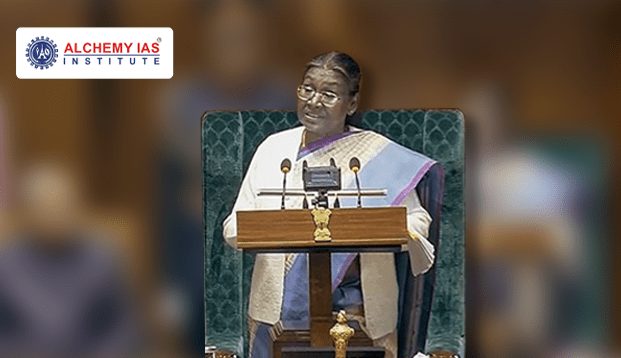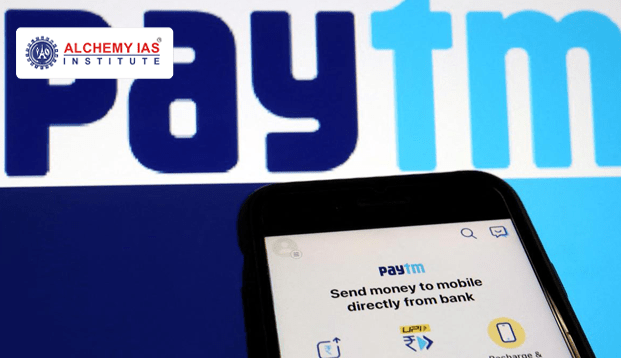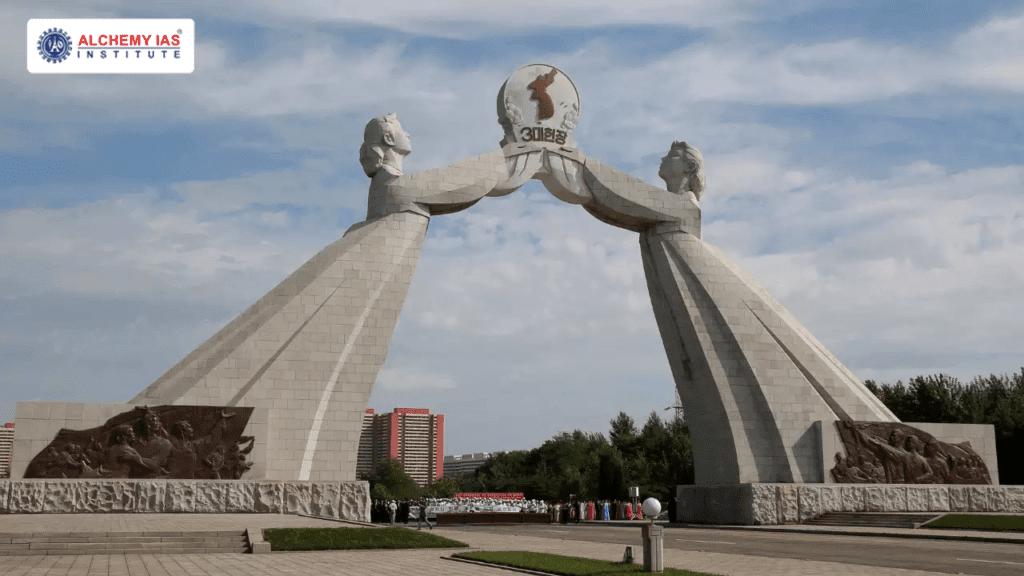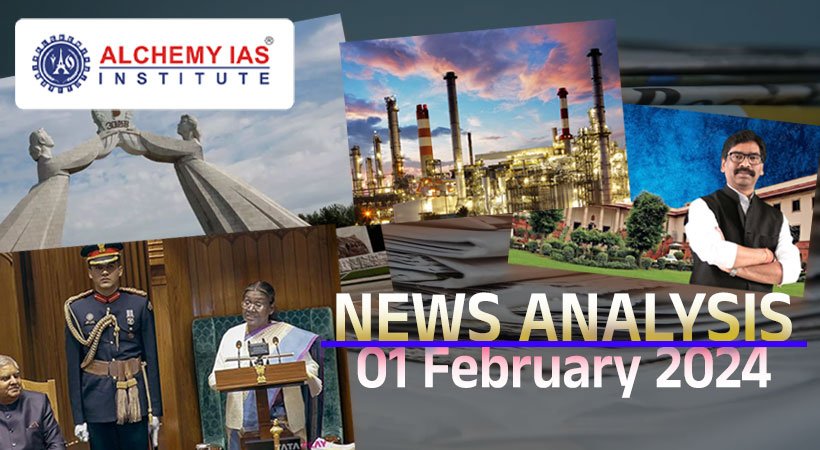APPOINTMENT AND REMOVAL OF CHIEF MINISTER
Syllabus: GS.2: Indian Polity: State Executive
Why in News: Jharkhand Chief Minister Hemant Soren was arrested by the Enforcement Directorate (ED) in connection with a land scam. After being questioned for over seven hours at his home in Ranchi, he resigned from his position. The Governor of Jharkhand, C.P. Radhakrishnan, accepted his resignation.

How are Chief Ministers appointed and removed in India?
- Appointment:
- The Chief Minister is the real executive head of the state government in India, while the Governor is the nominal head.
- The Chief Minister is appointed by the Governor, but by convention, the leader of the majority party in the state legislative assembly is appointed.
- If no party has a clear majority, the Governor may appoint the leader of the largest party or coalition, but this leader must then win a vote of confidence in the assembly.
- The Chief Minister can be a member of either the upper or lower house of the state legislature, but most Chief Ministers have been members of the lower house.
- Resignation & Removal:
- The term of the Chief Minister is not fixed and he holds office during the pleasure of the governor.
- However, this does not mean that the governor can dismiss him at any time. He cannot be dismissed by the governor as long as he enjoys the majority support in the legislative assembly.
- But, if he loses the confidence of the assembly, he must resign or the governor can dismiss him.
- The Chief Minister can resign from his office by submitting a resignation letter to the respective Governor of the State.
The Role and Evolution of Deputy Chief Ministers in Indian Politics
. Deputy Chief Ministers (Deputy CMs) have emerged as crucial figures in Indian politics, often resulting from political compromises, particularly in coalition governments. Their increasing prominence underscores the complexities of power dynamics within parties and among key interest groups. Recent developments, such as Nitish Kumar’s ninth term as Bihar’s Chief Minister, accompanied by the appointment of two deputy CMs, exemplify this trend.
- Significance of Deputy CMs:
- Arises from political compromises, especially in coalition governments.
- Reflects a lack of unchallenged authority within a party or across key interest groups.
- Current Trends:
- Increasing prominence: Four out of five states with recent elections have deputy CMs.
- Presence in major states, except Tamil Nadu and Kerala.
- Constitutional Basis:
- Article 163(1) establishes a Council of Ministers aiding the Governor.
- No explicit mention of Deputy CMs is made in either Article 163 or Article 164(1)
- Role and Status:
- Deputy CMs hold equivalent rank to Cabinet Ministers.
- The Deputy CM enjoys the same pay and perks as a Cabinet Minister.
The role of Deputy CMs in Indian politics has evolved over time, reflecting political exigencies and the dynamics of coalition governance. Their presence signifies a nuanced power-sharing arrangement within state administrations, often shaped by historical precedent and contemporary political realities.
THE PRESIDENT’S ADDRESS TO PARLIAMENT
Syllabus: GS.2: Indian Polity: Sessions of the Parliament
Why in News: President Droupadi Murmu delivered a speech at a joint sitting of the two Houses in the new Parliament building, focusing on diverse aspects of the economy. She also emphasized the accomplishments of the Narendra Modi government over the past decade.

Historical Background of President’s Address in India
- The tradition of the President addressing the Indian Parliament has roots in history.
- In the United Kingdom, monarchs spoke to Parliament since the 16th century, and in the United States, President George Washington did so in 1790.
- In India, this practice can be traced back to the Government of India Act of 1919, granting the Governor-General the right to address legislative bodies. Although there was no provision for a joint address, the Governor-General did address both the Legislative Assembly and the Council of State together at times.
- After the Constitution came into effect in 1950, President Rajendra Prasad addressed the Lok Sabha and Rajya Sabha on January 31, 1950, marking the beginning of this tradition.
Constitutional Provisions
- The Constitution empowers the President to address either House or a joint sitting of both Houses of Parliament.
- Article 87 outlines two specific occasions for a joint address: the opening session of a new legislature after a general election and the first sitting of Parliament each year.
- Initially, the President addressed every session, but a 1951 amendment changed it to an annual address.
- The President’s speech communicates government achievements and agenda, without a fixed format.
- It’s crafted by the government with ministry inputs and announces significant policy and legislative initiatives.
- Over the years, these addresses have shaped legislation and policy, introducing reforms like statehood grants and disaster management laws.
Procedure & Tradition
- The President’s address is a significant Parliamentary event, uniting the entire Parliament with ceremony and protocol.
- The Lok Sabha Secretariat meticulously prepares for it, attending to details like ceremonial cloth and the President’s arrival.
- The President delivers the address in the Central Hall, addressing members of both Houses.
- After the President’s address, both Houses hold a motion of thanks debate where MPs discuss governance.
About Joint Sessions of Parliament
- In India’s bicameral Parliament, the concurrence of both houses is vital for bill passage. Yet, deadlocks between the Rajya Sabha and Lok Sabha may arise. To resolve such impasses, the Constitution provides for joint sittings.
- The President of India calls for these sessions under Article 108, chaired by the Lok Sabha Speaker. Alternatively, the Deputy Speaker of the Lok Sabha or the Deputy Chairman of the Rajya Sabha presides in their absence.
- The Vice President, who heads the Rajya Sabha, doesn’t preside over joint sessions.
- If needed, any Parliament member can temporarily preside by mutual agreement.
- Currently, joint sittings occur in the Central Hall, also used for the President’s address at the commencement of each new session post-general elections.
INTERNET SHUTDOWNS IN INDIA
Syllabus: GS.2: Indian Polity & Governance
Why in News: Recently, the Supreme Court voiced concerns over the Union Territory of Jammu and Kashmir’s omission to publish orders pertaining to Internet service suspensions.
Access to Internet – A fundamental Right (Article 19)
- In January 2020, the Supreme Court of India affirmed that access to the Internet is a fundamental right under the Indian Constitution in the case of Anuradha Bhasin vs Union of India.
- The court mandated that any government restrictions on Internet access must be temporary, limited, lawful, necessary, and proportionate, with orders subject to judicial review.
About the Issue
- Internet shutdowns have become a contentious issue in India, with recent instances occurring in Jammu and Kashmir and Haryana during farmer protests.
- Data from the Software Freedom Law Center (SFLC) reveals that since 2012, there have been 665 instances of Internet shutdowns in India, with Rajasthan leading in frequency.
- Reasons for shutdowns range from maintaining law and order to preventing cheating in exams.
- However, the lack of transparency raises concerns about citizens’ access to information and services.
- While governments argue for the necessity of shutdowns to curb misinformation, critics highlight their impact on freedom of speech and the economy.
- Although the Telecom Suspension Rules were amended in 2020 to limit shutdowns to 15 days, they lack provisions for order publication or review.
- The Supreme Court has ruled indefinite suspensions impermissible and urged prompt review, while parliamentary committees advocate for clearer definitions of terms like “public emergency.”
- Despite interventions, shutdowns persist, reflecting tensions between security concerns and civil liberties.
- These shutdowns disproportionately affect lower socio-economic groups reliant on mobile Internet, impacting the economy, society, and individual rights.
- Adhering to Supreme Court guidelines and parliamentary restrictions is crucial to combat India’s reputation as the “internet shutdown capital” and fully realize Digital India’s potential.
PAYMENTS BANKS IN INDIA
Syllabus: GS.3: Indian Economy: Regulations in Banking Sector
Why in News: The Reserve Bank of India (RBI) has imposed additional restrictions on Paytm Payments Bank Ltd. (PPBL), announcing that the bank will no longer be permitted to operate its mobile wallet after February.

Introduction to Payment Banks:
- In response to the need for comprehensive financial services for small businesses and low-income households, the Reserve Bank of India (RBI) established a committee headed by Dr. Nachiket Mor in September 2013.
- One of its key recommendations was the introduction of specialized banks known as ‘payments banks’ to cater to these underserved groups.
- These banks, such as Airtel Payments Bank and India Post Payments Bank, function similarly to traditional banks but operate on a smaller or restricted scale.
- Unlike commercial banks, payment banks do not engage in credit risk activities like advancing loans or issuing credit cards. Instead, they focus on basic banking services such as accepting demand deposits (up to Rs 1 lakh), providing remittance services, and facilitating mobile payments/transfers/purchases.
Objectives and Scope:
- Payments banks serve as a crucial tool in widening the spread of payment and financial services to small businesses, low-income households, and migrant laborers.
- With the objective of ensuring that every Indian resident has access to a global bank account by January 1, 2016, these banks aim to promote financial inclusion in a secured, technology-driven environment.
- Governed under a differentiated bank license by the Reserve Bank of India, payment banks focus on expanding financial inclusion by offering small savings accounts and payment/remittance services to various segments including migrant laborers, low-income households, small businesses, and the unorganized sector.
Regulation and Compliance:
- Payments Banks operate under the regulatory framework of various statutes including the Companies Act, 2013, Banking Regulation Act, 1949, RBI Act, 1934, Foreign Exchange Management Act, 1999, Payment and Settlement Systems Act, 2007, and other relevant directives.
- They are required to adhere to regulations such as maintaining a Cash Reserve Ratio (CRR) and investing a minimum of 75% of their “demand deposit balances” in Statutory Liquidity Ratio (SLR) eligible Government securities/treasury bills with maturity up to one year.
- Additionally, they must hold a maximum of 25% in current and time/fixed deposits with other scheduled commercial banks for operational and liquidity management purposes.
- Despite these limitations, payment bank account holders can deposit and withdraw money through any ATM or service provider, aiming to cater to individuals and small businesses effectively.
INDEX OF EIGHT CORE INDUSTRIES (ICI)
Syllabus: GS. 3: Indian Economy – Eight Core Industries
Why in News: Output growth of India’s eight core sectors slumped to a 14-month low of 3.8% in December, compared with an 8.3% pace a year earlier and revised growth of 7.9% in November 2023.

About the index of eight core industries (IECI):
- Index of Eight Core Industries (IECI) refers to a production volume index that measures the collective and individual production performances of eight selected core industries.
- These industries are Natural Gas, Coal, Refinery Products, Crude Oil, Cement, Electricity, Steel, and Fertilizers.
- The compilation and releasing of the index are done by the Office of the Economic Adviser (OEA), Department of Industrial Policy and Promotion (DIPP), Ministry of Commerce and Industry.
About Eight Core Industries:
- In India, the Core Sectors, comprising Natural Gas, Coal, Refinery Products, Crude Oil, Cement, Electricity, Steel, and Fertilizers, wield significant influence over economic and industrial activities.
- Together, they account for 40.27% of the Index of Industrial Production (IIP), with Refinery Products currently holding the highest weight. This ranking represents their impact, with Electricity previously leading.
- The Core Industries hierarchy, based on weightage, is as follows:
- Refinery Products > Electricity > Steel > Coal > Crude Oil > Natural Gas > Cement > Fertilizers
About Index of Industrial Production (IIP)
- The Index of Industrial Production (IIP) is a crucial economic indicator that tracks changes in the volume of production of industrial goods within a specified time frame.
- Compiled and published monthly by the National Statistical Office (NSO) under the Ministry of Statistics and Programme Implementation, it serves as a composite measure reflecting the growth rates across different industrial sectors.
- IIP categorizes production changes into broad sectors such as Mining, Manufacturing, and Electricity, as well as use-based sectors like Basic Goods, Capital Goods, and Intermediate Goods.
- Its base year is typically set as a reference point for comparison, with the current base year being 2011-2012.
- The significance of IIP lies in its utility for governmental agencies, including the Ministry of Finance and the Reserve Bank of India, in making informed policy decisions.
- Moreover, it plays a pivotal role in calculating quarterly and advance Gross Domestic Product (GDP) estimates, highlighting its importance in understanding and analyzing economic trends and performance.
THE ARCH OF REUNIFICATION
Syllabus: GS 2: IR: North Korea and South Korea Dispute
Why in News: North Korea signaled a harder line on South Korea in tearing down a monument symbolizing reunification efforts, days after leader Kim Jong Un said the idea was no longer a possibility.

About the Arch of Reunification
- The Arch of Reunification, also known as the Monument to the Three-Point Charter for National Reunification, stands as a significant monument in Pyongyang, North Korea, situated on the Pyongyang-Kaesong reunification highway.
- Unveiled a year after the 2000 inter-Korea summit between Kim Jong-il, then North Korean leader, and former South Korean President Kim Dae-jung, the arch symbolizes the aspirations for reunification through peaceful means, as outlined in the summit’s joint declaration.
Rise in tensions between the two Koreas
- Standing at 30 meters tall, the monument represents the ideals of self-reliance, peace, and national cooperation, emphasizing Kim Jong-il’s diplomatic approach to reunification.
- However, recent developments under Kim Jong Un’s leadership suggest a stark departure from reconciliation efforts.
- In a speech before North Korea’s parliament, Kim advocated for constitutional changes to designate South Korea as the country’s “most hostile state,” indicating a shift towards hostility.
- Moreover, Kim expressed disdain for the monumental efforts of his father, vowing to dismantle them. These actions, coupled with the closure of agencies overseeing cooperation and reunification, signify a hardened stance towards South Korea.
- Additionally, repeated instances of communication shutdowns between North and South Korea, alongside provocative missile tests and military drills, underscore heightened tensions in the region, suggesting a continuation of confrontational dynamics in 2024.
- South Korea’s new conservative government, led by President Yoon Suk Yeol, emphasizes close coordination with the U.S. and Japan to counter North Korea’s aggression.
- Meanwhile, North Korea aligns more closely with the Sino-Russian axis, with Russia increasing engagement, particularly amid the Russia-Ukraine conflict.


